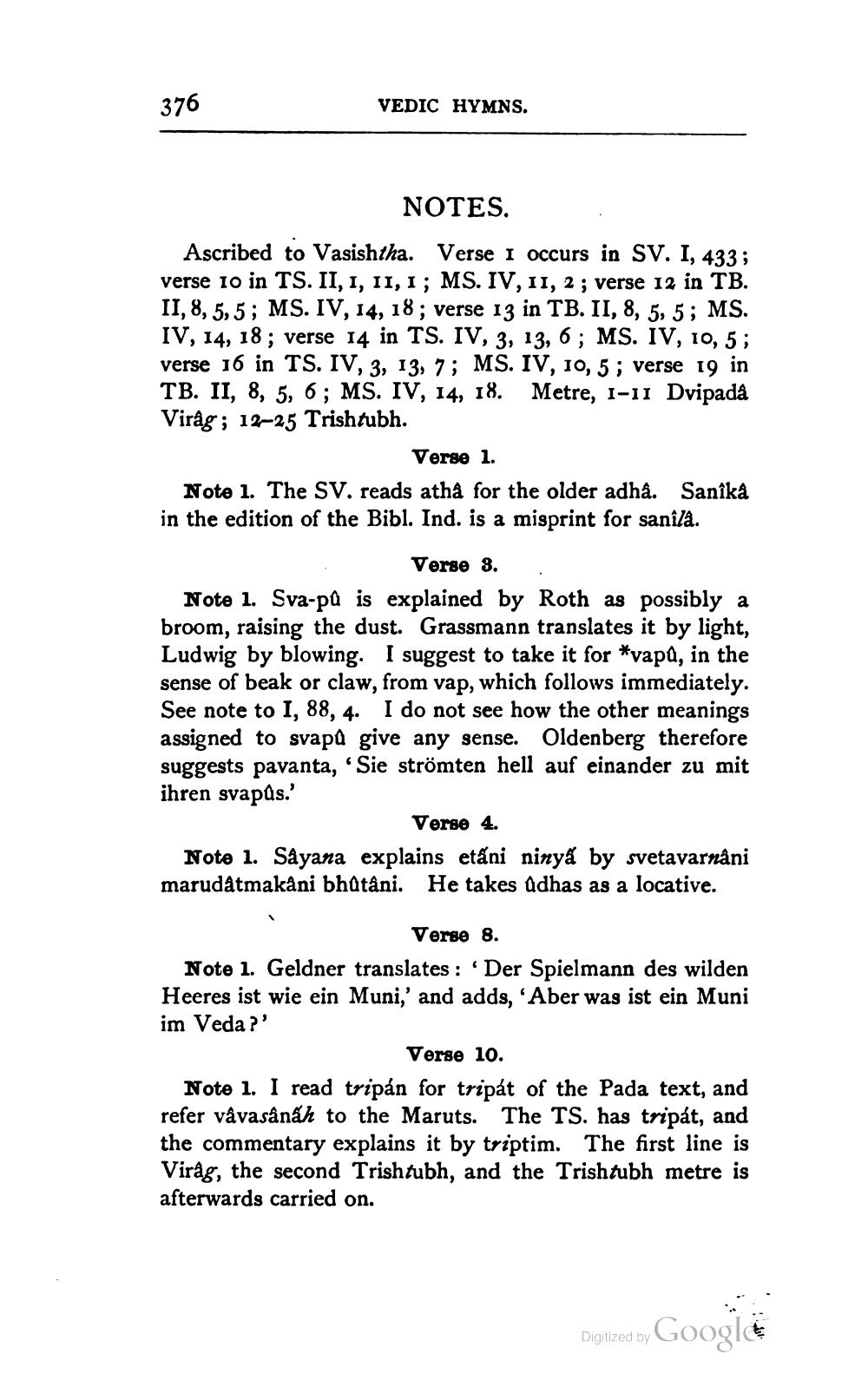________________
376
VEDIC HYMNS.
NOTES. Ascribed to Vasishtha. Verse I occurs in SV. I, 433; verse 10 in TS. II, 1, 11, 1; MS. IV, 11, 2; verse 12 in TB. II, 8, 5,5; MS. IV, 14, 18; verse 13 in TB. II, 8, 5, 5; MS. IV, 14, 18; verse 14 in TS. IV, 3, 13, 6 ; MS. IV, 10, 5; verse 16 in TS. IV, 3, 13, 7; MS. IV, 10,5; verse 19 in TB. II, 8, 5, 6; MS. IV, 14, 18. Metre, 1-11 Dvipada Virág ; 12-25 Trishtubh.
Verse 1. Note 1. The SV. reads atha for the older adha. Sanîka in the edition of the Bibl. Ind. is a misprint for sanilà.
Verse 3. Note 1. Sva-pů is explained by Roth as possibly a broom, raising the dust. Grassmann translates it by light, Ludwig by blowing. I suggest to take it for *vapa, in the sense of beak or claw, from vap, which follows immediately. See note to I, 88, 4. I do not see how the other meanings assigned to svapą give any sense. Oldenberg therefore suggests pavanta, 'Sie strömten hell auf einander zu mit ihren svapus.'
Verse 4. Note 1. Sâyana explains etáni ninya by svetavarnani marudatmakani bhatâni. He takes Udhas as a locative.
Verse 8. Note 1. Geldner translates : Der Spielmann des wilden Heeres ist wie ein Muni,' and adds, 'Aber was ist ein Muni im Veda?'
Verse 10. Note 1. I read tripán for tripát of the Pada text, and refer våvasânâh to the Maruts. The TS. has tripát, and the commentary explains it by triptim. The first line is Virág, the second Trishtubh, and the Trishtubh metre is afterwards carried on.
Digitized by G
Digitized by Google




